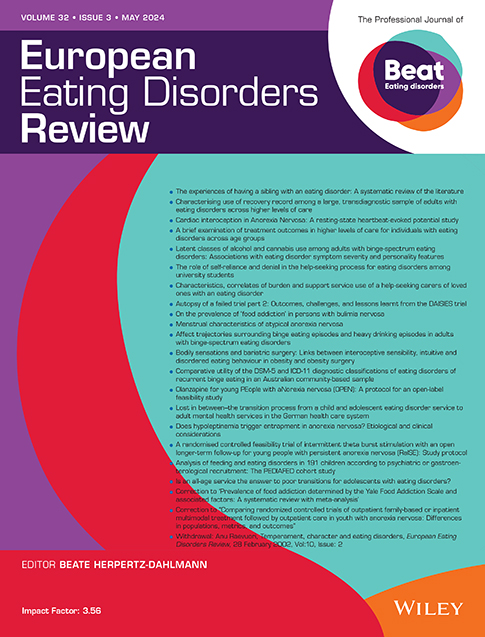Cost-Effectiveness Analysis of Family-Based Treatment With Additional Home Treatment for Adolescent Anorexia Nervosa
Abstract
Objective
Family-based treatment (FBT) is promising for treating adolescents with anorexia nervosa, but long-term remission rates are modest. Home treatment (HT) as a supplement to FBT aims to enhance sustainability and effectiveness by supporting recovery within the family. This study compares the cost-effectiveness of FBT alone versus FBT with additional HT for adolescents with anorexia nervosa.
Method
This cost-effectiveness analysis is based on a non-randomized pilot study, which examined the effectiveness of HT for adolescents with anorexia nervosa, disregarding the financial aspects. HT involved therapeutic interventions delivered in the patient's home environment, while FBT involved structured therapy sessions at the psychiatric clinic. Data from 61 patients were analysed, with 40 receiving FBT + HT and 21 receiving FBT only. Costs included FBT sessions, HT sessions, and inpatient treatment. Effectiveness was measured by weight restoration at thresholds of expected body weight (EBW) > 85% and EBW > 95%.
Results
FBT + HT promoted greater weight restoration within three months compared to FBT alone (70% vs. 52% at EBW > 85%; 38% vs. 29% at EBW > 95%). FBT + HT was more cost-effective, with lower average costs per patient meeting weight restoration criteria (8243 vs. 20,446 Swiss francs at EBW > 85%; 15,387 vs. 37,485 Swiss francs at EBW > 95%). Inpatient treatment accounted for most of the cost, with FBT + HT reducing hospitalisation needs.
Conclusions
FBT with additional HT is a more cost-effective treatment for adolescents with anorexia nervosa. Although the cost-effectiveness index was relatively high, effective treatment could reduce the long-term burdens of this disorder. Larger long-term studies are needed to validate these findings and assess sustained cost-effectiveness.

 求助内容:
求助内容: 应助结果提醒方式:
应助结果提醒方式:


